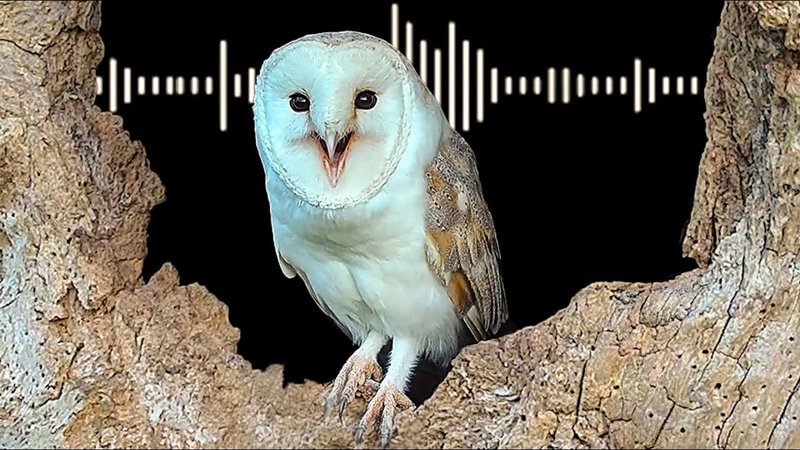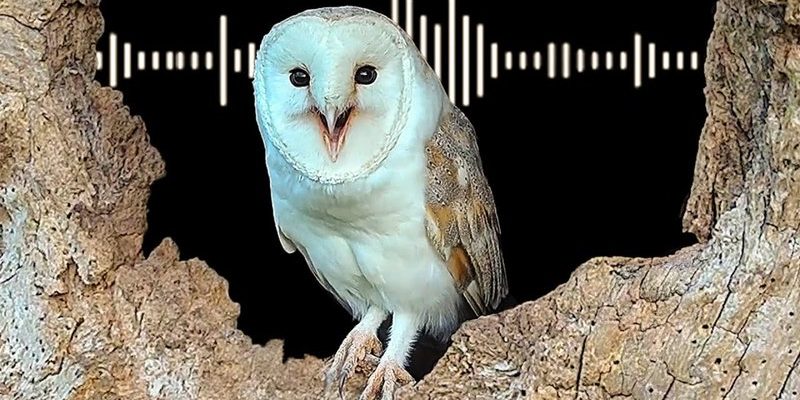
Imagine you’re at a lively gathering where everyone is sharing stories. Each voice adds a layer to the atmosphere, helping you grasp the mood and dynamics of the group. Barn owls do something similar with their sounds. These vocalizations function like a language, conveying information about territory, mating, and even alarm. So, let’s dive into the world of barn owl calls and what they actually mean.
Understanding Barn Owl Calls
Barn owls use vocalizations for various reasons, and each call has its purpose. The most common sound you’ll hear is a long, eerie screech that can travel quite far. This isn’t just a spooky sound; it serves to establish territory. When a barn owl lets out this call, it’s a signal to other owls: “This is my space, and you should keep your distance.”
There are also softer sounds known as “whistles” or “chirps.” These tend to be more subtle and are usually exchanged between mates or between a mother and her chicks. When you hear these softer sounds, it often means that the owls are communicating something more intimate or urgent—perhaps it’s time for feeding or a call for reassurance.
Being night creatures, barn owls are often vocal during twilight hours. This is when their vocalizations can reveal a lot about their hunting and social habits. Each sound has its nuances, painting a richer picture of their lives beyond just being mysterious nighttime hunters.
The Screech: A Distinctive Call
The signature sound of a barn owl is its screech, a long and drawn-out call that can really send shivers down your spine. So, what’s behind this scream? It’s not just for show—this call plays a crucial role in defining territory. When a barn owl screeches, it’s like waving a flag that says, “Stay away from my turf!”
Interestingly, the intensity and frequency of this screech can change based on the owl’s emotions. For example, a distressed screech may sound different from a territorial one. This variation adds depth to their vocal communication, giving other owls insight into each other’s states of mind. Whether defending their hunting ground or asserting dominance, this screech is a powerful tool in their vocal arsenal.
But it’s not just about scaring away rivals. The screech can also attract a mate. During the breeding season, male barn owls are especially vocal, often serenading their potential partners. So, while it might sound haunting to us, in the barn owl’s world, it’s a mix of romance and warning.
Chirps and Whistles: The Soft Side
While the screech grabs attention, barn owls have a softer side too. This is where chirps and whistles come into play. These more delicate sounds are often used in situations where the owls need to convey gentle messages, like when a parent is calling to its young.
You might wonder how these softer sounds work in the wild. Picture a mother barn owl calling out to her chicks nestled safely in the barn. The soft chirps reassure the young ones, conditioning them to recognize their mother’s voice. It’s much like how we might use a soothing tone with our pets or kids to comfort them.
These softer calls also play a role in the bonding process between mates. When they’re perched close together, you might hear these little chirps as a form of communication that strengthens their connection. It’s fascinating how vocalizations can shape relationships among these remarkable birds.
Alarm Calls: A Warning System
Barn owls are skilled predators, but like all creatures, they face threats. When danger is near, their vocalizations shift dramatically. They have an array of alarm calls that signal to other owls about potential threats. These sounds are often sharp and quick, designed to grab immediate attention.
Let’s say a fox approaches their nesting area. A barn owl might emit a rapid series of short calls, alerting any nearby owls to the danger. It’s like sending out an emergency text to friends. If they hear it, they’ll know to take cover or vacate the area until the threat passes. This form of communication is crucial for survival, showcasing how well these birds have adapted to their environment.
Interestingly, alarm calls can differ based on the type of predator. For example, the call for a ground predator like a fox may be different from that of an aerial threat, like a larger bird of prey. This distinction highlights the importance of context in their vocalizations.
Vocal Learning in Barn Owls
You might be surprised to learn that barn owls are vocal learners. This means they can adapt and change their calls based on their environment and experiences. Much like humans learn languages through exposure and practice, barn owls also refine their vocal skills over time.
For instance, young barn owls will initially produce basic sounds but gradually evolve their vocalizations as they mature. They learn to mimic the calls of other barn owls in their area, allowing them to fit seamlessly into local populations. This vocal flexibility is key for social interactions, territory establishment, and mating.
This learning process underscores the importance of socialization in barn owls. The more they engage with their surroundings and other owls, the richer their vocal repertoire becomes. It’s a fascinating aspect of their behavior that emphasizes their intelligence.
The Role of Vocalizations in Conservation
Understanding barn owl vocalizations goes beyond mere curiosity; it has real implications for conservation efforts. By recognizing the significance of their calls, researchers can better monitor populations and their well-being. For example, if a barn owl is unusually quiet, it might signal stress or a decline in health, prompting further investigation.
Additionally, fostering environments where barn owls can thrive also involves providing adequate nesting sites and reducing disturbances. By appreciating the role of vocalizations, we can create awareness around their needs and encourage conservation initiatives.
You might not think of sound when considering wildlife conservation, but it plays a crucial role in understanding animal behavior. Protecting areas where barn owls can vocalize freely ensures that their communication remains intact, keeping their social structure healthy.
Barn owls speak a fascinating language that consists of a range of vocalizations. From their haunting screeches that establish territory to the gentle chirps that foster bonds between mates, each call holds meaning. By learning about these vocalizations, we gain a clearer picture of their lives and behaviors.
Just like us, these owls have complex ways of expressing themselves. Understanding their vocalizations is not just about appreciating nature; it’s about connecting with these incredible creatures and recognizing the importance of conservation. Next time you hear a barn owl, take a moment to listen closely. You might just catch a glimpse into their world.

